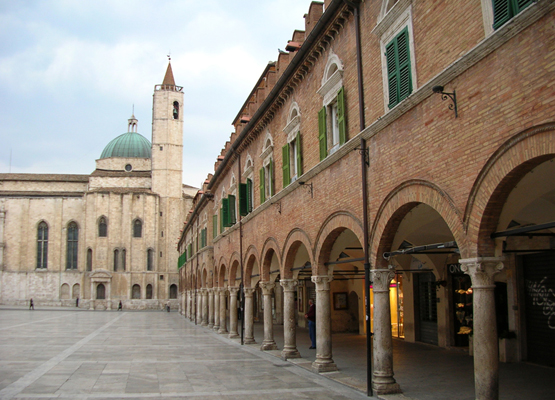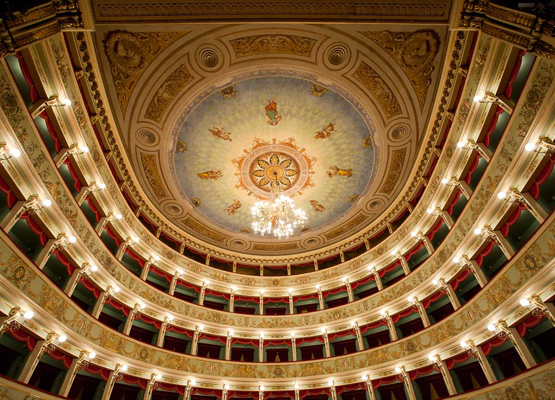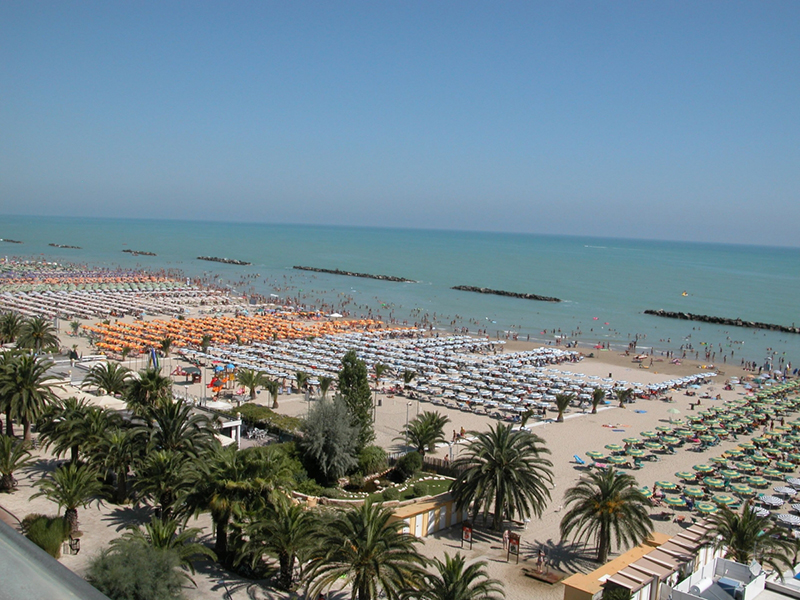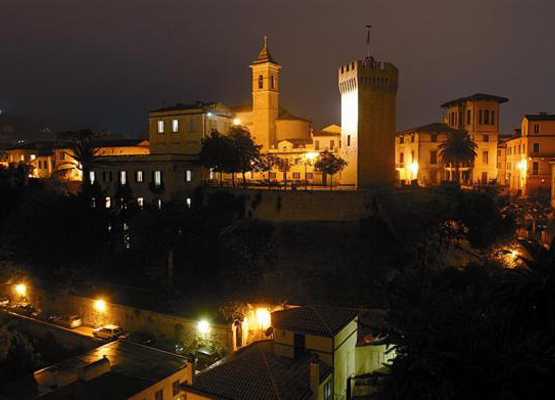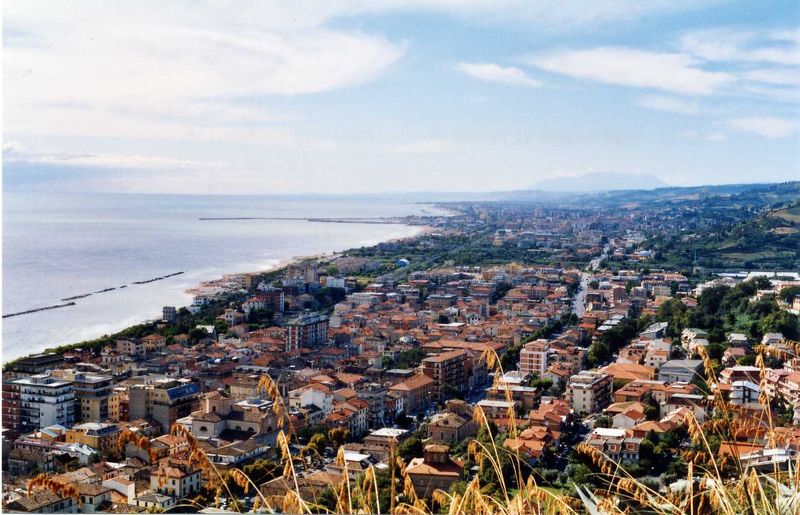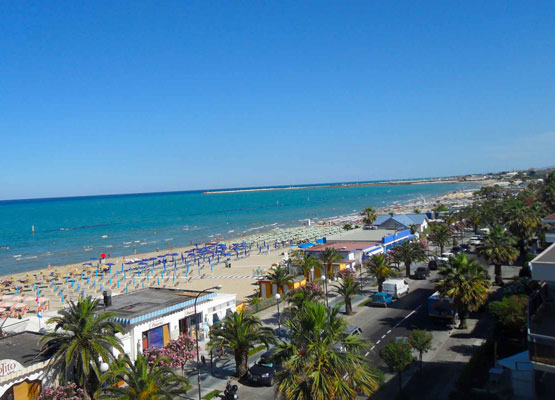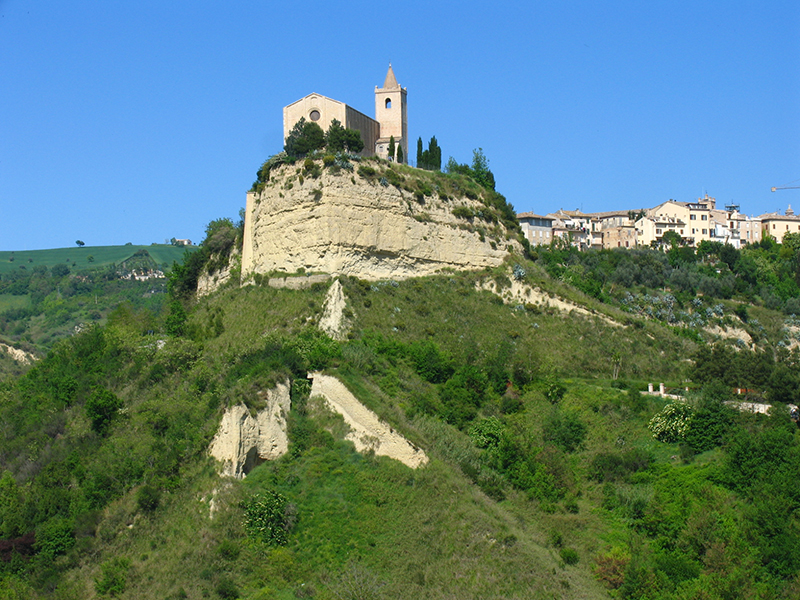Ascoli Piceno
Ascoli Piceno is one of Italy’s historical and monumental cities: its old town centre is made of travertine, a sedimentary rock extracted from the quarries of the territory. At the heart of the city, “Piazza del Popolo”, the enchanting Renaissance square where we find some of the most important buildings of Ascoli Piceno: “Palazzo dei Capitani”, the renowned “Caffè Meletti” and St. Francis Church. Piazza Arringo, the most ancient square of the town, represents another main location of Ascoli Piceno city-life: here we admire St. John’s Baptistery and St. Emidio’s Cathedral, which keeps the crypt dedicated to the Patron Saint. We mention as well the Episcopal palace and “Palazzo dell’Arengo”, hosting the municipal art-gallery and some municipal offices. The inner city shows its medieval features also through its roads and alleys, such as Via Pretoriana, Via di Solestà, Via delle Stelle, Via Soderini, Via del Trivio, Antico Cardo and Corso Mazzini, decumanus maximus crossing the city-centre from the western to the eastern side. Among the monuments, we remind the ancient Roman bridge Solestà (one of the fewest in Italy that can be visited on the inside, too), the ruins of the Roman theater, the Grotto of the Annunciation, the Pia Fortress, the Malatesta Fortress and the Lombard palace with Ercolani Tower, one of the “surviving” among the then almost two-hundreds towers during the Middle Ages, reason that Ascoli Piceno is also called “City of one hundred towers”. Other “must see” spots are the small temples St. Emidio alle Grotte and St. Emidio Rosso, besides the Church of Saint Vincent and Anastasius with its peculiar façade.
San Benedetto del Tronto (AP)
San Benedetto del Tronto is the most famous and important city of the Riviera Delle Palme, which originally referred only to the coast of this town, while now the touristic area also includes the seasides of Grottammare and Cupra Marittima and other neighboring inland villages. San Benedetto del Tronto is the main tourist centre of the Marche region, chosen by thousands of Italian and European visitors every year and has the biggest fishing port of the Adriatic Sea and one of the most important in Italy. The city history is not well known. At the present moment, the most validated hypothesis relates its origin to a centre risen up during the twelfth century close to the church in which are kept the remains of St. Benedict the Martyr. The church has been point of contention between the municipalities of San Benedetto del Tronto and Fermo for centuries. St. James of the Marches was appointed to solve the controversy in 1463. The present San Benedetto del Tronto was called Castrum Sancti Benedicti until 1860 and grew up demographically over the centuries. Since 1999, San Benedetto del Tronto has been repeatedly awarded by the prestigious “Blue Flag”, thanks to its clean sea water and shore and its top-level tourist places. San Benedetto del Tronto offers a sizable number of bicycle paths and you can even go biking through the city from north to south (from the city limits of Grottammare until the Sentina Natural Regional Reserve).
Grottammare (AP)
Grottammare has ancient origins. There are human traces from the Neolithic. Its territory was discovered A necropolis dating from the seventh or fifth centuries BC was discovered in its territory.
From the eighteenth century began the expansion towards the coastal area, whose urban plan takes the roman one. That system involved the crossing of two main axes, the thistle (in principle with the north-south) and decumanus (east-west). Intersection was often the hole, which is the city’s main square. The rest of the settlement was developed on parallel streets to two main roads. In Grottammare these guidelines can be found in the axis formed by the present Via Marconi and Cairoli (thistle) and in that of Corso Mazzini (decumano) as the intersection with the central square Pericle Fazzini.
The seafront of Grottammare is crossed by a long stretch of the Adriatic Ciclovia, which once completed will connect the entire Adriatic coast from the mouth of the Po River, to Apulia. Grottammare enjoys a benign climate, with relatively temperate winters and warm summers. The average annual temperature is about 15 ° C. It is crossed by the 43rd parallel of the northern hemisphere.
Porto D’ascoli (AP)
The name Porto d’Ascoli reminds the concession made to the city by Frederick II in 1245 to build a harbour at the mouth of Tronto river. Porto d’Ascoli belonged to the Church, in the province named marca anconitana and its territory reached the Tronto river, which marked the boundaries with the Kingdom of Naples (then Kingdom of the Two Sicilies). In 1935, Porto d’Ascoli has been annexed to San Benedetto del Tronto (before it was part of the municipality of Monteprandone) to favour the territorial expansion of the town and in 1961, it officially became an integral part of the city of San Benedetto del Tronto. Between 2004 and 2007, the southern seafront of San Benedetto del Tronto has been strongly modernized with the pedestrian area, the bycicle path (part of the great project “Ciclovia Adriatica” which will cover the whole Adriatic Coast) and the “thematic” gardens: the wet garden, the arid garden, the palm garden, the rose garden, the Mediterrean scrub garden. Authentic natural spaces made with specially selected materials and created to admire the landscape or to access to the sea.
OFFIDA (AP)
Offida is an ancient hill town, cradle of the art of bobbin lace (“merletto a tombolo”); the inhabitants have a high longevity index. The old town centre is built on the hill, surrounded by crenellated walls. Deep in the green woods, Offida offers amazing views of the Sibillini Mountains and of the neighboring fertile hollows, the small built up areas, the vineyards and fields. Studies on the origin of medieval term “Ophida” (or Ofida) have come to contrasting conclusions. The arguments of Greek (from Ophis, snake) or Roman (from Oppidum, fortified city) origin faded, in favor of the theory of an Indo-european derivation, Oph (rich) and Ida (hill, mountain). The inner city is surrounded by the ancient walls (thirteenth century) and throughout the streeets and the squares, many monuments of great historical, architectural and artistic value prove the prestigious past of Offida. The town-hall palace, situated on the main square, an elegant medieval building, is the administrative centre of the city and houses the Serpente Aureo (Golden Snake) Theater, an authentic jewel of Baroque, displaying the shape of a horseshoe.

